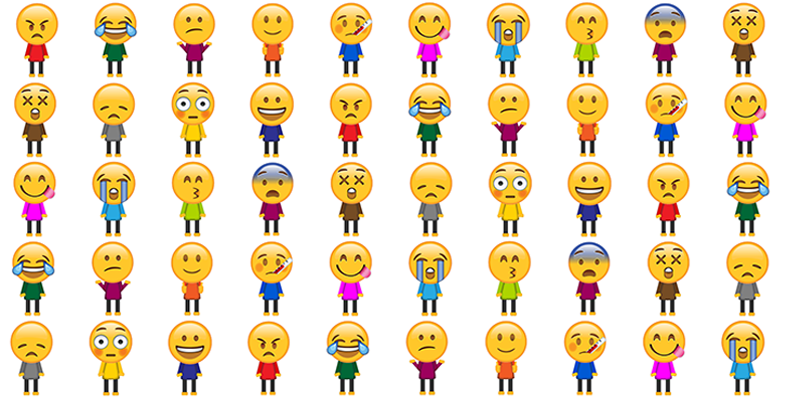4.3 From alphabet to emojis
A key invention in the evolution of writing – for languages in the West at least – was the alphabet. This originated somewhere in the vicinity of Egypt or Palestine around 2000 BC, and produced a writing system which was easy to learn, quick to write, and avoided the ambiguities of many earlier scripts. Writers and readers of English, for example, only need to know about 52 alphabetic signs (the lower and upper case letters) along with numerals, punctuation marks and a few symbols such as the ampersand (&) in order to be able to use the language. A reader of hieroglyphics would have had to have a working knowledge of about 600 characters to understand complex texts. The way the alphabet provided such a compact and flexible system was by severing completely the relationship between the look of a sign and its meaning. In other words, the shape of the letters we use today no longer physically resemble the concepts they’re referring to in any meaningful sense at all. Instead, each letter is related to a sound (or set of sounds), which combine together with other letters to create the sound of a w-o-r-d.
So where do emojis fit into this picture of developing communications technologies? As with all other writing systems, they have developed along with technology as human civilisation finds further ways to extend its intellectual reach. When messaging each other these days via mobile phones or other computer-based chat systems, we usually write in much the same way that we speak. But unlike speech, writing doesn’t always allow us to express emotion and mood in a direct or straightforward way. Tone of voice, facial expressions, gestures – these are all vital elements of face-to-face communication, but they’re stripped away in writing. Emojis offer a way of compensating for this. They’re a quick and concise way of adding a layer of emotional character to casual, text-based conversation. And it’s this that has propelled their global popularity.
